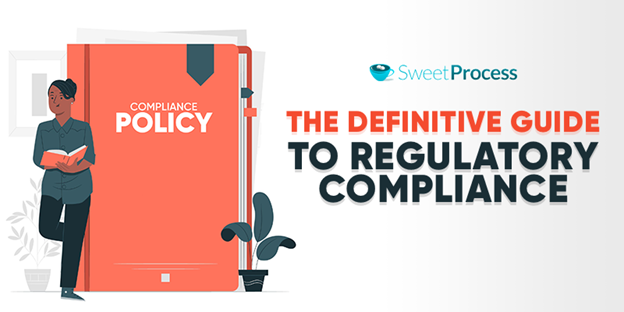

Research of cyber breach cases in the United States, the United Kingdom, and Canada shows that the number of claims and total losses in penalties and settlements issued is rising. The average cost per case increased nearly two-thirds in just one year (2017–2018), from $4.4 million to $7.2 million.
Similarly, Hilton Hotels paid $700,000 to state regulators, nationwide insurance paid $5.5 million in fines, and Target $18.5 million to clear regulatory claims.
Regulatory compliance refers to a set of rules that your company must follow to comply with the law. For example, it might entail following Occupational Safety and Health Administration (OSHA) guidelines to guarantee a safe working environment for employees.
The financial services industry also has its rules, including how to manage sensitive data and cybersecurity.
Regardless of the industry or size, all organizations must follow specific rules and regulations as part of their operations. Any violation of this regulation will likely result in legal repercussions such as federal penalties.
In this in-depth article, you’ll learn all there is to know about regulatory compliance.
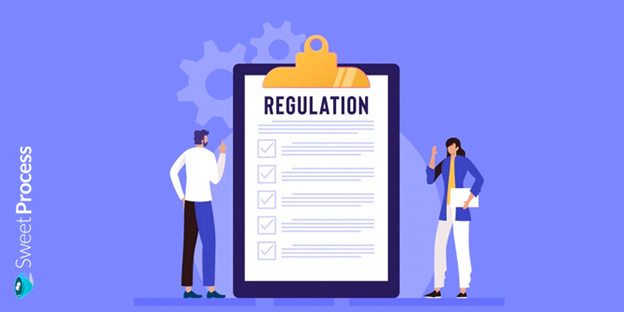
While it is critical to comply with regulations and be aware of their relevance and potential penalties in the event of a violation, you should also familiarize yourself with some key definitions to position yourself as a professional when discussing compliance.
In this chapter, you’ll learn about the definitions of some commonly used terminologies in regulatory compliance.
1. What is regulatory compliance?
Regulatory compliance refers to an organizations’ set of policies, procedures, and processes that promote adherence to laws, rules, requirements, and guidelines enacted by legislative authorities in the jurisdiction where the organization operates.
In other words, regulatory compliance is the conscious effort of an organization to conform to specifications or laws. Companies that default face charges as set aside by the state law.
2. What is a regulation?
Regulations are rules enacted by the government or other institutions to regulate how something is done or influence how people behave.
Regulation is a broad phrase whose meaning is usually determined by the context in which it is used. In biology, for example, gene regulation and metabolic regulation allow living organisms to adapt to their surroundings and preserve homeostasis. At the same time, in business, it is simply compliance to rules governing an industry in which the organization operates.
3. What is a regulator?
A regulator is a person who is in charge of monitoring a particular industry or set of commercial operations.
Regulators are typically hired by a company with the express purpose of ensuring that commercial activities are conducted lawfully and fairly per established standards and laws. However, they primarily operate as a watchdog for the organization to maintain control over the flow of operations.
4. What is corporate regulatory compliance?
Simply put, corporate compliance refers to how a company ensures that it complies with legal obligations and legislation as mandated by governing bodies.
New laws are being enacted every day that affect or support commercial ventures. However, keeping up with all of the regulations can be exhausting. Therefore, an organization’s purposeful attempt to recognize and follow current and new legal requirements controlling its commercial activities within a jurisdiction is known as corporate regulatory compliance.
5. What is a regulatory requirement?
A regulatory requirement is a government-imposed rule that an organization must follow. The authorization to act can come from the state or the federal government. Nonetheless, every organization’s operation and interaction is regulated by a set of rules.
6. What is a regulatory compliance cost?
Regulatory compliance cost is the amount of money an organization spends to guarantee that it complies with applicable and recognized regulations within its field of commercial activity.
Compliance costs can include salaries of compliance officers, time and money spent on publicizing, etc.
7. What is a regulatory compliance policy?
A regulatory compliance policy is a written statement from an organization that defines and outlines the organization’s commitment to complying with all laws and regulations, and a full report on the structures and practices put in place to achieve compliance.

With the regulatory environment constantly changing, businesses have only one duty: to remain compliant at all costs. Businesses must learn how to adapt whenever they notice these changes, otherwise they put their businesses at risk.
Even though the constant regulatory changes may be costly to some businesses, a strong emphasis must be placed on following and responding to compliance regulation changes since failure to comply can have negative consequences on your business.
Compliance requirements are not in place to make life more difficult for businesses; instead, they are intended to reduce incorrect, harmful or illegal behavior. Furthermore, properly adhering to regulations can assist firms in preventing potential adverse events from affecting their core activities.
Embracing regulations can also result in increased efficiency since it allows the organization to do the specialized business analysis needed to understand the business better and make strategic decisions that can help the organization stand the test of time.
Regulations are generally put in place to protect someone or something from harm, whether employees, consumers, the general public, or the integrity of commerce or business processes.
But there are other goals apart from these.
1. To establish and implement controls at organizations
Business is an essential component of any society. Because it is a separate entity, it must follow the rules established by the industry in which it functions. Regulations create a sense of restraint on commercial influence or power, resulting in a reasonable guideline for treating employees and other stakeholders fairly.
2. To keep abreast of and assess how organizations comply with laws and regulations
Investors or interested individuals who want to check an organization’s level of compliance with applicable regulatory requirements within their industry become more interested in investing in it.
A company that achieves regulatory compliance can confidently and accurately tell its stakeholders that it has met particular requirements and has been verified as having done so by an industry-accepted regulatory agency.
3. Identify areas where organizations are not complying
While an organization may be ecstatic with adhering to specific standards to the letter, it is equally critical to pay attention to places where they have not checked the box, as this could have severe consequences in the future.
4. Provide ways for organizations to report on their compliance with laws and regulations
This is an audit of how well a company follows the requirements. The regulation’s purpose is to direct the review process by comparing the company’s performance to legal requirements and highlighting areas where stricter compliance is required.

The importance of regulatory compliance in business can never be over-emphasized. If you want to run a business ethically, compliance has to be part of your core value and company culture.
Here’s why regulatory compliance should be on the front burner for every business organization.
1. Financial health
Complying with regulations improves your business and increases profitability.
Financial health cannot be overlooked in any aspect of a business because it depicts its overall situation throughout a fiscal year.
On the other hand, regulatory compliance benefits a company not only in terms of a better reputation but also in terms of avoiding unduly high penalties. As a result, the production and efficiency of such a corporation will grow.
2. Protection from lawsuits
Regulatory compliance may appear onerous and time-consuming in practice, but it provides the business with the peace of mind required to focus on other important business matters. In addition, adherence to rules protects the organization from overusing its authority or influence, decreasing the risk of being sued in court by a third party.
3. Protection from cybercrime
Finance and healthcare are two industries that deal with sensitive data. They collect valuable information from clients regularly. They attract malevolent actors due to the nature of their operations.
Regulatory compliance is even more important in these sectors since it forces businesses to provide more information and follow tighter regulations and procedures that help protect their data and assets from hackers.
4. Improve your organization’s overall system and operations
Companies must do a specific requirement analysis in their business sector to comply with regulations and build policies and strategies to meet these requirements.
5. Build a positive internal reputation among employees, customers, and the public
Regulatory compliance can benefit all stakeholders involved in the business’s survival, both instinctively and intentionally. Customers will be satisfied, and their experience will improve because the organization closely adheres to the regulations that validate customers’ rights.
Finally, the public is attracted to organizations that have checked the compliance box of defending themselves and protecting their immediate environment. As a result, the company’s overall reputation will improve.
6. Achieve higher employee productivity and retention
Employee productivity may not always be linked to a rise in pay. When it comes to real-world productivity, the importance of job security and being rewarded for one’s efforts cannot be overstated. An organization that adheres to the labor regulations that regulate its business area benefits its employees, and benefits itself in terms of productivity.
Noncompliance with regulations is a rule infraction and may be a criminal offense. Even the layperson understands that breaking the law carries a punishment.
Noncompliance with regulations might cost the affected organization money or perhaps some business embargo. The section below provides you with an in-depth look at the cost of noncompliance with regulations.
1. Penalties and fines
It is desirable to assign skilled personnel to the function of checking regulatory compliance. Penalties and fines can take many different forms, limiting or restricting your business activity.
Some situations may not necessitate paying the penalty right away, but they may require additional inquiry, which may cost you time and extra consultation fees. Nevertheless, it is advisable to follow all recognized regulations that govern an organization’s actions to reduce the risk of being penalized.
2. Scandals and injuries to reputation
An organization’s brand reputation can suffer if it is subjected to compliance violations regularly. This might also have a financial impact on the company’s situation by discouraging potential investors.
3. Imprisonment
Individuals who willfully violate health and safety violations face a steep penalty and the potential for jail time.
4. Loss of current or potential staff
Potential competent employees may be discouraged if they learn that the organization where they seek employment has been consistently prosecuted for multiple violations of employee rights. This will undoubtedly make them feel insecure, prompting them to abandon the hiring process. As a result, the afflicted organization suffers a significant loss.
5. Downtime and loss of productivity
Compliance with regulations is crucial to the success of organizations with long-term goals because even minor violations can result in the closure of a corporation, especially if the situation violates human rights.
Organizations that do not follow regulations may suffer from low production or, in the worst-case scenario, no output for some time. Breach of law carries serious consequences, one of which could be suspending production activity until the investigation is completed.
6. Difficulty in securing capital or financing
Investing in an organization is inherently risky. Investing in a non-compliant organization is a futile endeavor. A prudent investor is expected to think about whether an organization is in compliance before committing funds to such an organization.
As a result, it will be difficult for the organization to raise finances to meet its objectives.
7. Personal liability
Individuals who are prosecuted may face personal liability due to their actions. Particular violations may force an individual to pay a fine or penalty to resolve accusations against him, often quite large. If the affected individual is not financially stable, this could result in deprivation or the loss of significant assets.
Companies that are subject to a lot of regulation must think about how to structure their businesses and processes to operate efficiently while also adhering to the rules.
Company leaders need to think about the following factors:
1. How to predict the potential impact of regulations on the company’s strategic direction, its business goals, and its regulatory compliance processes.
2. How to balance the duties of compliance among legal, auditing, and other business functions.
3. How to encourage standard compliance across different teams and company locations.
4. How to create internal systems that monitor and report on compliance.
5. How to assess the value of compliance in employee performance.

Understanding compliance intricacies is crucial for every organization. Employees have to be aware of and understand compliance requirements to maintain high standards.
Therefore, it’s pertinent for those who wish to ensure regulatory compliance to investigate all relevant rules for the industry and follow each law to the letter.
Here are some of the most salient regulatory compliance requirements every workplace should be attuned to.
1. Hiring practices
To avoid potential discrimination, human resources managers should always conduct their hiring practices per the law or risk being disciplined by the Equal Employment Opportunity Commission (EEOC). This applies to any employee who works for a company based in the United States.
Individuals discriminated against because of their gender, race, color, religion, national origin, age (over 40), disability, or genetic information are given special protection by the EEOC. A woman who declares she is pregnant while looking for work, for example, cannot be denied a job because of her pregnancy. Other departments provide additional protections to workers based on their circumstances.
2. Health benefits and employee privacy
The government has enacted specific regulations to ensure access to health care and the privacy of employees’ health information. Employers with over 50 full-time employees, for example, are required to provide health insurance coverage or face fines.
Furthermore, employer-provided health insurance is frequently governed by state laws, with specific areas of coverage that employers must maintain in a company-sponsored plan. This also means that employers have access to more health information about their employees than they would otherwise.
3. Work environment
Employees have the right to work in a nondiscriminatory environment. As defined by the law, discrimination extends beyond hiring and firing procedures. Therefore, an employer’s acceptance and enforcement of rules that allow workers to perform their duties without fear of retaliation based on who they are is essential to an employee’s regular work at a job.
Reasonable accommodations must be made for employees with disabilities that make it possible for them to perform their job tasks. While employers are generally free to set their own workplace rules, those who do not discourage or indirectly promote discriminatory attitudes and practices may be held liable in civil or criminal court.
4. Wages and hours
Specific guidelines govern how employees may be employed, how time off is calculated, and how much they must be paid. For example, employees must be compensated for all time spent on the premises performing their duties to an employer. In addition, any non-exempt employee who works more than 40 hours in a week must be paid at least 1.5 times their regular wage for any time worked beyond 40 hours.
The Family and Medical Leave Act guarantees job protection for qualified employees who need to take time off for their own health, to care for a new baby, or to care for another family member.
5. Workplace safety
All employers must provide a safe working environment for their employees. Occupational Safety and Health Administration (OSHA) representatives are responsible for inspecting businesses on a regular and unannounced basis to ensure that all standard functions of the company are designed to protect employees from workplace-related injury or illness.
More importantly, regardless of industry, all businesses contribute to worker’s compensation. Worker’s compensation is a form of insurance to protect employees injured on the job to compensate them with medical treatment, compensation for lost wages, and vocational rehabilitation, among other benefits.
6. Recruitment and retention of employees
Human resource executives must pay increasing attention to talent management issues such as recruitment, retention, and productivity in today’s employment market. Employees who demonstrate hard work, commitment, leadership, and other positive characteristics should, of course, be rewarded for their efforts. As a result, companies look to HR managers to ensure those good employees are recognized and groomed for advancement when possible.
HR managers should help employees reach their full potential by developing educational and training programs. They may also want to collaborate with an organization’s communications department to promote advancement opportunities. Of course, all of this must be done following regulatory requirements to ensure that promotions are not perceived as due to partiality or influence peddling.
7. Employee discipline and termination
Human resources managers frequently intervene to discipline or terminate employees who are causing problems for the company the same way they reward good employees. Employers must, however, follow specific rules when it comes to discipline and termination.
Employees who report illegal or unsafe activities within an organization are protected by OSHA. They’re protected from being fired, harassed, intimidated, demoted, reassigned, denied overtime, or having their pay or hours reduced. When human resource professionals ensure that compliance standards are met in all areas, there is an assurance of a more secure future.
Corporate compliance requirements are constantly changing due to changing laws and the various actions that a business takes. Here are some critical areas of compliance in which you must participate.
1. Record keeping: This entails keeping records per federal agency regulations, state laws, and local statutes.
2. Service of process: You’re required to have legal procedures in place for responding to lawsuits.
3. Entity expansion or contraction: You have to be aware of state-related business activities that can result in compliance violations, such as business expansions or contractions (even if they are unintentional).
4. Other entity changes: Companies must file necessary documents for changes in corporate names, authorized shares, and other matters.
5. Annual report filings: This implies meeting deadlines for submitting state-mandated reports and paying state fees.
6. Business licenses: This entails obtaining and maintaining the necessary state and local business licenses for your company to operate smoothly.
7. Registered agent representation: Appointing and maintaining a registered agent in your corporation’s home state and every foreign state where you are permitted to conduct business is required.
8. Tax reporting and payments: This involves filing and paying any franchise, corporate, and state income, sales, use, or other taxes on time and accurately.
Staying compliant to regulations can be challenging. Being aware of these challenges helps you prepare for and mitigate any future mishaps. At times, the compliance requirements are so overwhelming that companies trying to comply aren’t always able to do so.
Staying compliant takes a lot of discipline, investment in resources, human capacity development, and keeping tabs with constantly changing regulations. It can also be complicated and expensive to manage, making it difficult for many organizations to stay on top of regulatory compliance. Below, we take a quick look at why a lot of compliance programs fail.
An effective compliance program handles a company’s policies and procedures to protect the organization and foster ethical organizational culture.
However, the challenge lies in transforming those policies into practices that influence employee behavior. The following are the top 11 reasons most compliance programs fail.
1. Failure to assess and understand the risk
Businesses can get caught up in the excitement of achieving future goals and fail to assess and understand new risks when entering new markets or launching a new business model.
Companies are exposing themselves to significant risk by failing to evaluate the actual risks posed by their market entry strategy and business model. A risk assessment raises awareness of business risks, which can then be managed or avoided with the help of improved internal controls.
2. Lack of leadership
Leadership must emphatically emphasize compliance as a key to good business to have a successful compliance program. Yet, too often, there is no defined leader or visible leadership to the compliance program and the organizational culture of compliance and ethics from the top down.
Employees look to their direct manager, rather than senior executives, to set the example for behaviors such as meeting attendance, management skills, and integrity in most companies. When employees come across management who is either insincere or hypocritical in their support of compliance programs, the company and the program suffer.
3. Insufficient resources
Compliance programs frequently fail due to inadequate human and financial resources. For example, consider a one-person compliance department with no additional resources or additional compliance tasks added to a legal counsel’s already overburdened plate.
This manner of delegating compliance responsibilities to other positions frequently reveals a lack of commitment to regulatory compliance. Conversely, matching human and financial resources to the company’s actual compliance risk demonstrates a commitment to business integrity and is critical to the program’s effectiveness.
4. Insufficient profile of the compliance function
The success of the compliance program and the effectiveness of its risk prevention depend on the compliance function and those who lead it. What percentage of businesses have a chief compliance officer (CCO)? How many companies assign regulatory compliance to the legal department as a separate task? Is the compliance team responsible to the board of directors, the legal department, or the CEO?
Many international compliance standards require the CCO to formally report to the board or another oversight organization to protect the function’s independence.
5. Lack of clear procedures to make policies accessible
Policies that are written in overly complex vocabulary or jargon, or those simply assumed to be understood by offices operating in various languages, can lead to a lack of understanding and adherence in some businesses. Policies without procedures are even worse.
Companies must clearly document how they expect policies to be followed or face the risk of them not being followed. The gap between guidelines and effective implementation is bridged by providing clear, simple procedures. Employees are unlikely to read, much less embrace and implement policies, if they do not understand the first few sentences or if the policy conflicts with job responsibilities.
6. Competing priorities and incentives
Management unintentionally creates competition for compliance when one compliance issue or initiative takes precedence over all other matters.
For example, when new regulations are published or when a company receives a significant penalty for failing to comply with a code, that compliance area is likely to receive increased attention in the future. So there has to be a kind of balance.
7. Insufficient communication and training
Managers often face obstacles when sharing across complex organizations topics that some employees may feel uncomfortable discussing outside of their circles.
Employees should be encouraged to ask questions and report anomalies for discussion. Training and fostering a “speak up” culture go hand in hand.
Formal anti-corruption training is often sold in one-size-fits-all packages. Training must be relevant to the business and cultural issues that employees will face, to be relevant to departments with varying responsibilities or a dispersed workforce.
8. Insufficient third-party management
Failure to commit to educating and monitoring third-party agents, suppliers, and distributors to a standard proportionate with a company’s understanding of their code of conduct can have serious ramifications. Regulatory bodies do not understand if the loophole or non-compliance is caused by third-party management. To them, it’s a result of your negligence or non-conformity, and that’s why your organization has to step up.
9. Inadequate monitoring
Effective monitoring is another critical component of a compliance program that many companies fail to prioritize. Regularly monitoring or checking a compliance program’s adherence to regulations is an essential step toward continuous improvement.
Monitoring helps you oversee policies, procedures, records, and actions to see if they are being followed or if they need to be updated. Routine monitoring assists compliance teams in improving their product continuously. It also has a powerful effect. Employees (or third parties) are more likely to comply when they know they will be monitored.
10. Inconsistent enforcement and corrective actions
Applying double standards in implementing the compliance codes is one of the main issues affecting compliance with regulations in the workplace. For example, in most cases, a senior member of the management will not be treated in the same way as a junior employee when both of them violate a regulation.
If managers keep imposing different penalties for the same or similar actions, people will see the process as lacking in credibility and will attach less importance to compliance. Therefore, companies must maintain dignity in applying corrective actions and be consistent in their enforcement to boost their employees’ confidence that they will be treated fairly.
11. Compliance incentive is not aligned with organizational goals
This is perhaps one of the most common causes for compliance failure, and it can overshadow an organization’s best efforts to address many of the problems listed above. Some incentives, even if unintentionally, induce wrongdoing.
Incentives that reinforce the correct values and ethics, on the other hand, aid in the creation of a culture that promotes compliance. Before issuing an incentive, organizations must ensure it is fair to all, but most importantly, it must align with organizational goals.
Other reasons include:

Compliance risk is the possibility of a company facing legal fines, material loss, or financial loss due to failure to comply with industry laws and regulations or other obligations. In addition, a corporation has duties to the state in which it was formed and the states where it is licensed to conduct business.
Any institution, large or small, public or private, state or federal, faces the danger of non-compliance. Failure to comply with applicable laws and regulations can harm revenue, as well as a loss of reputation, commercial opportunities, and worth.
However, there are different kinds of compliance risks an organization might face. For example, legal compliance risks include environmental risk, corruption, workplace health and safety, data management, and process risk.

Potential financial losses and legal penalties that can result from failing to follow governmental and industry guidelines are a common source of concern for most modern businesses. Interestingly, there are always new regulations, thus increasing people’s chances of being exposed to compliance risks.
The following are some of the most common compliance risks:
1. Environmental risk
Environmental compliance risk is concerned with the potential for an organization’s operations to harm the environment. The organization must regularly train employees and supply resources to achieve environmental compliance in areas such as use of dangerous chemicals, ecosystem devastation, groundwater pollution, etc.
2. Corruption
Legal compliance with anti-corruption laws examines an organization’s efforts to comply with industry laws and regulations. Bribery, money laundering, theft, fraud, and other legal compliance concerns are common examples of corruption. The Foreign Corrupt Practices Act (FCPA), for example, bars US people, firms, and foreign subsidiaries of American-based businesses from bribing foreign officials or political agents.
3. Workplace health and safety
Companies must follow strict health and safety measures by law. Workers are the lifeblood of any company. Therefore, keeping them safe and healthy is a must, as evidenced by the Occupational Safety and Health Administration’s extensive regulatory framework (OSHA). These laws cover nearly every worker in the United States. In addition, the European Agency for Safety and Health at Work (EU-OSHA) and the European Medicines Agency are the analogous regulatory authorities in Europe (EMA).
4. Data management
Depending on the sorts of data an organization works with, it must adhere to some standards on storing and transmitting data and who has access to it. For example, credit cards, bank documents, medical information, and student data are among the protected data.
5. Process risk
A process risk differs from the normal process or fails to follow an established procedure for accomplishing a task. For example, an accounting inaccuracy breaches current service contracts. In addition, a firm must have a written strategy for remotely accessing its network. It is considered a process risk when an employee misuses the proper remote access method.
An organization’s activities and processes that comply with regulations are called organizational compliance. In the context of regulatory compliance, entity status refers to whether or not an entity complies with government regulations, laws, or industry standards.
Organizations often experience a change in entity status, and that’s why they have to continually review their compliance level to avoid any inconsistencies with legal obligations.
Here are eight ways a change in status can affect your business.
Your business operations can be affected directly and indirectly if your business loses its reputation. Here are eight ways a change in status can impact your business.
1. Possible loss of court access
One of the potential consequences of your organization falling out of good standing is a loss of access to the courts. That’s because a change in entity status may have limited your company’s rights to operate as a legal entity, thus making it impossible to take legal action or enforce a contract.
2. Forced shutdowns
A state may force a company to close physical locations or plants if proper licenses are not in place. At the same time, some penalties may involve making a one-time payment or having the business under regular shut down periods.
Some offenses may be so severe that they threaten the company’s existence, especially if they jeopardize human health or rights. Running an arbitrary pharmaceutical business without a license from a recognized agency, for example, is an instant shut down if found by healthcare regulatory bodies.
3. Inability to pursue new business
No organization would want to associate itself with an organization that has no legal standing with the recognized law and regulation in the industry. It would be a significant risk to do so, as would failing to consider whether businesses you associate with are in compliance with industry regulations could jeopardize other business forecasts in the future.
4. Difficulties in securing capital or financing
Lenders equate a loss of good standing with risk and may deny financing as a result. A reasonable investor would assess an organization’s compliance with legislations and recognized regulations in addition to its cash flow before doing business with them. If the organization is behind schedule in complying with regulations, investors would likely withhold their funds to prevent financial loss. As a result, the business will not raise financing to ensure its survival, eventually leading to closure.
5. Imposition of tax liens
Non-payment of taxes can also affect your relationship with lenders, as tax liens generally take priority over other types of liens. In addition, tax payment is not an optional responsibility. A company is obligated to fulfill its tax responsibilities.
Noncompliance with the tax authorities indicates that the company is unwilling to cooperate. The laws that govern this type of offense are not very favorable to either individuals or businesses. An organization that does not pay its taxes on time is robbing itself of obtaining loans or grants from outside sources.
6. Loss of the right to your corporation’s name
A company’s name is a valuable asset that must be protected no matter what happens. You could lose the right to operate under your company’s current name because other entities may be able to claim that name while you are not in good standing or if your compliance claims are found to be false.
7. Fines and penalties
State and local governments impose and collect fines and penalties on non-compliant entities. Therefore, it costs a lot of money to be non-compliant in the long run, even if the attempt initially shows you as a savvy person or organization.
However, once you’re caught in violation of a recognized regulation or law, your cleverness can turn into folly, resulting in the loss of money you were seeking to save previously. In addition, you might end up paying more than you would have if you compiled with the regulations recognized within your industry.
8. Personal liability
When hefty penalties are imposed on a company or an individual, they can go bankrupt in the blink of an eye. Penalties could, for example, include the government locking an organization’s account if it is revealed that the organization is involved in fraudulent activities. As a result, this could result in insolvency or a sudden bankruptcy.
The following are steps that help you stay on top of regulatory compliance. If properly implemented, these steps will help you centralize all tasks required to comply with regulations, ultimately helping you meet regulatory compliance and standards requirements.
Here are 25 ways to ensure successful compliance within an organization.

Regulatory compliance is the adherence to the guidelines, laws, specifications, and regulations relevant to the business process. When regulatory compliance is not adhered to, it results in legal punishment, especially federal fines.
The prominence of regulatory compliance to business survival has led to the creation of corporate compliance manager positions and chief and regulatory compliance officers. Their primary role is to hire employees whose main focus is to ensure the organization conforms to complex legal mandates and stringent and applicable laws.
Regulatory compliance will always vary by country as different countries have different regulatory compliance mandates. Here’s a brief runthrough of a few countries and their regulations.
1. United States
In the United States, Sarbanes-Oxley Act (SOX) is legislation with similar regulations included in Deutscher Corporate Governance Kodex (DCGK) in Germany. SOX is a federal law in the US with a primary role to protect investors by ensuring corporate disclosures are more accurate and reliable.
2. Australia
In Australia, the Corporate Law Economic Reform Program Act 2004 (CLERP), was intended to improve this country’s business and company regulation. In addition, part of the coalition government is dedicated to promoting economic development, employment, and business opportunities.
3. Canada
In Canada’s government, regulatory compliance is a daily operational activity. This country established the Office of the Superintendent of Financial Institutions (OSFI) to regulate by interpreting legislation and regulations, developing rules, and providing regulatory approvals for some specific types of transactions. OSFI also supervises and regulates the foreign and domestic banks operating in the country.
4. The Netherlands
In the Netherlands, primary financial regulators are the Dutch Authority for the Financial Markets (AFM), and the Central Bank of the Netherlands (DNB). The role of AFM is comparable to the Securities and Exchange Commission (SEC) in the US, although it is the independent supervisory authority for the lending, investments, savings, and insurance markets. In conjunction with the European System of Central Banks, DNB implements and determines the monetary policy and exercises prudential supervision of financial organizations for the Netherlands.
5. India
Regulatory compliance in India is implemented across the central, state, and local regulation levels. The country focuses on central law, especially foreign funds, and financial organizations. Regulatory compliance differs based on the industry segment and geographical mix. The Reserve Bank of India (RBI) is the leading authority that lays down the compliance functions for the banks in the country.
6. Singapore
In Singapore, the Accounting and Corporate Regulatory Authority (ACRA) is the central national regulator of public accountants, business entities, and corporate service providers. The sole bank regulator in Singapore is the Monetary Authority of Singapore (MAS). It is a corporate body established under the Monetary Authority of Singapore Act to regulate financial institutions in capital markets, payments, insurance, and banking.
7. United Kingdom
In the United Kingdom, regulatory compliance outlines the targets that organizations are focused on achieving to ensure they adhere to and take steps that comply with the relevant policies, laws, and regulations. Most of the regulatory compliance is adopted from the European Union Laws. The local authorities provide regulatory functions in various ways, while the professional associations regulate their memberships.
The International Organization for Standardization (ISO) is one of the first international standards that dictates how businesses handle compliance. The Financial Reporting Council (FRC) issues the UK Corporate Governance Code, and all publicly listed companies present content to it in their core financial statements.
All industries have legally binding regulations that must be obeyed by all businesses in such sectors. However, these regulations are more pronounced in some sectors than others.
The following are some of the most common industries where regulations are prevalent.
Regulatory compliance is when a business adheres to the laws and regulations relevant to its operations, either state, federal, or international. However, the specific requirements will vary depending on the industry and business type.
Let’s take a look at some typical regulations.
1. Financial services
Regulatory compliance has a significant role in the financial services provision sector through the various acts formulated to enhance its activities. They include:
Dodd-Frank Act
The Dodd-Frank Act recognizes the financial regulatory system and eliminates the office of thrift supervision, assigns new responsibilities to existing agencies, and creates new agencies.
The Payment Card Industry Data Security Standards (PCI DSS)

The PCI DSS Standard is designed to ensure that all the organizations and companies that accept, store, process, or transmit credit card information maintain a secure environment.
Sarbanes-Oxley Act (SOX)
The SOX Act was passed in the US Congress in 2002 to protect investors from fraud in financial reporting by corporations. SOX came in response to financial scandals witnessed in the earlier years which involved publicly traded companies.
Anti-Money Laundering
Anti-Money Laundering (AML) are the laws and regulations designed to stop criminals from disguising illegally obtained funds as legitimate income. Financial institutions achieve regulatory compliance with legal requirements by actively monitoring and reporting suspicious activities.
2. Healthcare
Regulatory compliance ensures that healthcare companies adhere to the laws, guidelines, regulations, and specifications relevant to their business processes. It is the process of applying ethical, legal, and professional standards to a particular healthcare organization.
Health Insurance Portability and Accountability Act (HIPAA)
The Health Insurance Portability Accountability Act (HIPAA) ensures national standards that protect sensitive patients’ health information from being disclosed without receiving permission from the patient. HIPAA gives the right to the patients’ health information to the patient and sets limits and rules on the persons who can access the health information. It applies to all individuals.
Medicare Payment Resources System
Medicare Payment Resources System bases payment on codes using the classification system for the service.
Anti-Kickback Statute (AKS) and Physician Self-Referral Laws (Stark Laws)
The American Society of Anesthesiologists define the AKS as a criminal statute that bans the exchange of anything of value in an effort to induce the referral of business reimbursable by federal healthcare programs. Stark laws, on the other hand, are the laws that prohibit physician self-referral to an entity providing designated health services if the physician has a financial relationship with that entity.
Americans With Disabilities Act
The Americans With Disabilities Act is a law that prohibits the discrimination of people with disabilities in the workplace.
Bloodborne Pathogens Standard
The Bloodborne Pathogens Standard is a regulation outlining standard safeguards for eliminating or minimizing employee exposure to bloodborne pathogens. It requires work practice controls and the use of personal protective gear to ensure workers are protected from exposure to infectious pathogens.
Physician Payments Sunshine Act: Open Payments
The Physician Payments Sunshine Act ensures increased transparency around the financial relationship that may occur between physicians, teaching hospitals and manufacturers of drugs and medical devices. It requires medical device manufacturers to disclose to the Centers for Medicare and Medicaid Services (CMS) any payments or benefits of value given to a physician or teaching hospital.
Medicare Clinical Diagnostic Laboratory Tests Payment System
Clinical Diagnostic Lab Tests Payment System revises the payment system for clinical diagnosis and laboratory tests. It also states the implementation of the private payer fee schedule required by PAMA.
3. Cybersecurity and data privacy
Cybersecurity and data privacy include the measures taken to protect computer systems against unauthorized access from hackers. A data breach is an attack on cybersecurity that affects sensitive, confidential or otherwise protected data that is copied, transmitted, viewed or used by an unauthorized person.
General Data Protection Regulation (GDPR)
The General Data Protection Regulation is a legal framework that sets guidelines for collecting and processing private data for persons living in the European Union. In addition, GDPR mandates that EU visitors are provided with data disclosures.
California Consumer Privacy Act (CCPA)
California Consumer Privacy Act provides the right to know how a business collects personal information and how the information is shared and used. CCPA applies to for-profit companies that carry out trades in California and has over $25 million annual gross revenue.
California Privacy Rights Act (CPRA)
The California Privacy Rights Act, also known as Proposition 24, significantly improves the CCPA, and it is sometimes called “CCPA 2.0.” Although approved by California voters on November 3, 2020, the CPRA will not be enforced until July 1, 2023, while the provisions of the CCPA will remain in effect until that date.
Payment Card Industry Data Security Standard (PCI DSS)
The Payment Card Industry Data Security Standard are requirements intended to ensure all companies which store, process, or transmit credit card information maintain a secure environment.
Payment Application Data Security Standard (PA DSS)
The PA-DSS is a payment regulation that prevents vendors from storing and transmitting card holders’ prohibited data such as PIN data or CVV2.
Note: The main difference between PCI DSS and PA DSS is that while the former applies to all companies that store, process, or transmit cardholder data, the latter applies to vendors that produce and sell payment applications. They both apply to different industries where card transactions are involved.
Federal Information Security Management Act (FISMA)
The Federal Information Security Management Act defines the framework of guidelines and security standards for federal agencies to protect government information, operations, and assets against threats.
4. Energy and manufacturing
Regulatory compliance ensures adherence of laws and requirements by companies in energy and manufacturing, set forth by the local, regional and national government to oversee how products are produced.
Occupational Safety and Health Act (OSHA)
Occupational Safety and Health Act ensures worker and workplace safety. Its goal is to provide workers with a place of employment that is free from safety hazards and health threats.
5. Environmental management
Environmental management is a system that includes monitoring, reporting, summarizing, executing, and developing environmental policies.
National Environmental Policy Act (NEPA)
The National Environmental Policy Act is a law that promotes the enhancement of the environment by requiring all federal agencies to assess the environmental impact of their proposed actions and the establishment of the President’s Council on Environment.
Natural Resources Damages (NRD)
The Natural Resources Damages seeks the party responsible for restoring the destroyed natural resources and compensating the public.
6. Retail and consumer products
Retail and consumer products are the final goods resulting from the production and manufacturing of raw materials.
Payment Card Industry Data Security Standard (PCI DSS) and Payment Application Data Security Standard (PA DSS)
Both compliance standards also apply to the retail and consumer products industry. The standards are created by the Payment Card Industry Security Standard Council (PCI SSC) to protect both consumers and retailers.
7. Higher education
Higher education is any post-secondary education in learning institutions, usually affording a named degree, diploma, or certificate at the end of the studying course.
Higher Education Opportunity Act (HEOA)
The Higher Education Opportunity Act is a law intended to strengthen education resources for college and university by providing financial assistance to students in post-secondary education.
Family Educational Rights and Privacy Act (FERPA)
The Family Educational Rights and Privacy Act is a law that allows parents to have access to their children’s education records up until the age of 18 and then the student holds the sole right. These rights include the right to seek to have documents amended, and have control over the disclosure of personally identified information.
Higher Education Compliance Alliance (HECA)
The Higher Education Compliance Alliance provides the higher education community with a central repository of information and resources to comply with federal regulations and laws.
8. Energy and utilities
Utility and energy involve utility companies that deliver and maintain natural gas or electricity in one’s home.
North American Electric Reliability Corporation (NERC)
The North American Electric Reliability Corporation has jurisdiction, including owners, users, and operators of bulk power systems, serving over 400 million people.
9. Food and beverage regulatory compliance
Food and beverage regulatory compliance implies that companies establish separate and voluntary codices adhering to the legal regulations that govern the food and beverage industry.
Nutrition Labeling and Education Act (NLEA)
The Nutrition Labeling and Education Act was signed into law in 1990 by President George H. W. Bush. The law permits the use of label claims that characterize the level of a nutrient in a food as long as it is made in accordance with the Food and Drug Administration’s regulations.
Food Safety Modernization Act (FSMA)
President Barack Obama signed the Food Safety Modernization Act into law in 2011 to govern how foods are grown, harvested, and processed. The act aims to ensure the safety of the US food supply by directing federal regulators’ attention away from responding to contamination and toward preventing it.

Ensuring compliance with regulations isn’t the sole task of the government. Other essential entities in various capacities help with sundry regulatory duties, including non-governmental organizations and standard organizations.
Let’s look at some of these agencies and the crucial roles they play.
Regulatory agencies are the government bodies responsible for exercising autonomous free supremacy over some human activities in licensing and regulating capacity. These agencies include the following.
1. Securities and Exchange Commission (SEC)
The Security and Exchange Commission regulates the security markets and is responsible for investor protection.
2. Federal Trade Commission (FTC)
The Federal Trade Commission is responsible for protecting American consumers by stopping deceptive, unfair, and fraudulent practices in the marketplace.
3. Food and Drug Administration (FDA)
The Food and Drug Administration ensures the protection of public health through enhancing the efficacy, safety, and security of human, biological products, and veterinary drugs.
4. Occupational Safety and Health Administration (OSHA)
The Occupational Safety and Health Administration ensures safe and clean working conditions, enhanced by setting and improving standards and providing outreach, assistance, training, and education.
5. Federal Financial Institutions Examination Council (FFIEC)
The Federal Financial Institutions Examination Council serves to prescribe uniform principles, standards, and report forms for the federal examination of financial institutions and make recommendations to promote uniformity in the supervision of financial institutions.
6. Federal Communications Commission (FCC)
The Federal Communications Commission is responsible for regulating interstate and international communications, promoting connectivity, and ensuring a competitive and robust market.
7. US Office of Foreign Assets Control (OFAC)
US Office of Foreign Assets Control is responsible for administering and enforcing trade and economic sanctions based on US policy and national security goals against the target foreign countries, terrorists, regimes, and international narcotics traffickers.
8. United States Sentencing Commission (USSC)
The United States Sentencing Commission was created to reduce sentence disparity and enhance the transparency and proportionality in a sentence.
9. Small Business Administration (SBA)
Small Business Administration connects entrepreneurs with lenders and funds to assist them in planning and starting a business.
10. Environmental Protection Agency (EPA)
The Environmental Protection Agency is an independent executive agency of the United States federal government tasked with environmental protection matters. They are accountable for protecting people and the environment from health risks and hazards. They’re also responsible for sponsorship and research and the development and enforcement of environmental regulations.
11. Equal Employment Opportunity Commission (EEOC)
Equal Employment Opportunity Commission enforces federal laws and makes job discrimination illegal.
12. Employee Benefits Security Administration (EBSA)
Employee Benefits Security Administration is responsible for protecting and promoting pension, health, and other benefits for the participants and beneficiaries in the private sector employee benefit plans.
13. Civil Rights Center (CRC)
The Civil Rights Center with the Federal Department of Labor is responsible for promoting equal opportunity and justice through impartiality and integrity in the administration of several civil rights laws.
14. Employment and Training Administration (ETA)
The Employment and Training Administration of the Federal Department of Labor is responsible for administering federal government job, training, and worker dislocation programs.
These are private certified authorities, and they establish a wide range of accepted standards. They provide social justice and protect human rights as they focus on all the issues related to the environment, human rights, social justice, and advocacy. Therefore, they work to enhance the political and social conditions in a society.
They include the following.
1. American Society of Mechanical Engineers (ASME)
The American Society of Mechanical Engineers is responsible for promoting science, art, and the practice of multidisciplinary engineering and allied sciences all over the globe.
2. Financial Industry Regulatory Authority (FINRA)
The Financial Industry Regulatory Authority is responsible for writing and enforcing rules that govern registered brokers and broker-dealer firms in the US.
3. Public Company Accounting Oversight Board (PCAOB)
The role of the Public Company Accounting Oversight Board is to oversee audits of public companies, hence protecting investors and increasing their interests in the preparation of accurate, informative, and independent audit reports.
These are sets of standards that guide compliance with some regulations. They apply across the manufacturing, sale, marketing, and reimbursement of products.
The following are some of the standards that help guide regulatory compliance.
1. National Institute of Standards and Technology (NIST)
The National Institute of Standards and Technology is a physical sciences laboratory and non-regulatory agency of the United States Department of Commerce. It promotes innovation by advancing measurement science, standards and technology.
2. International Organization for Standardization (ISO)
International Organization for Standardization has the role of promoting worldwide property, commercial and industrial standards. The body includes representatives from various national standards organizations.
3. Control Objectives for Information and Related Technologies (COBIT)
Control Objectives for Information and Related Technology is responsible for the requirements that ensure effortless control of the IT process as considered by management. It also assists in assigning responsibilities, measuring performance, agreeing on objectives, and demonstrating interrelationship in processes.
4. Committee of Sponsoring Organizations (COSO)
The Committee of Sponsoring Organizations was created to assist companies in improving performance through the development of leadership, ensuring best risk management, fraud deterrence, internal control, and governance.
4. Statements on Auditing Standards (SAS)
Statements on Auditing Standards are responsible for providing guidelines to the external auditors based on generally accepted auditing standards concerning audits on private companies and issuing a report. SAS is a source of information regarding how they conduct and report audits on private companies.
COSO and SAS are both accounting standards applied while systemizing bookkeeping and other accounting work in a firm over time.
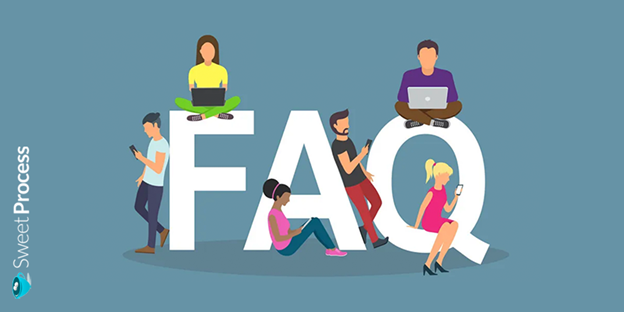
Here are common questions about regulatory compliance that people ask to gain a better understanding of the subject matter:
1. How can you use risk management as part of regulatory compliance management?
Risk management can be integrated into the compliance management system. Compliance managers can centralize all their information and automate various administrative processes needed to comply with Foreign Corrupt Practices Act (FCPA), International Organization for Standardization (ISO), Information Technology (IT) requirements, National Institute of Standards and Technology (NIST), and more.
Also, risk management can be used as part of regulatory compliance management in the following ways:
Activities involving risk management are often tied to process, and compliance is to set requirements. Risk focuses on uncertainty, while compliance involves adherence. Although compliance with rules and regulation protects organizations from various peculiar risks, risk management protects said organizations from risks that could cause noncompliance (which is also a risk).
Compliance and risk management align closely. Both help organizations stay grounded in stability and integrity on so many levels. There is no such thing as a robust risk management plan without compliance, and it goes both ways.
2. What is the relationship between regulatory compliance and Governance, Risk, and Compliance (GRC)?
GRC is an established process organizations use to structure governance, risk management, and regulatory compliance. It harmonizes and aligns an organization’s approach to risk management and regulatory compliance. It also helps organizations harmonize their information technology with business objectives.
In relation to regulatory compliance, GRC is the controls and measures to ensure organizations follow regulations established by the relevant industry requirements or governing bodies. The chief aim of GRC is to assist organizations in devising strategic approaches to enhance decision-making by senior leadership, exhibit sound risk management practices, and achieve compliance requirements.
3. How can audits ensure regulatory compliance?
An audit is a thorough review of an organization’s conformity to regulatory guidelines. Basically, auditing ensures organizations follow regulations and avoid being sanctioned. Audits ensure regulatory compliance by evaluating the strength and thoroughness of compliance preparations, security policies, user access controls, and risk management procedures during the process of a compliance audit.
The details examined in an audit depend on whether an organization is public or private, the data involved, and if it stores or transfers sensitive financial data. Audits are important in public companies because they are especially subject to federal examination.
By developing and enacting a functional audit process, companies accomplish two things. First, they have the best chance of discovering compliance issues before it becomes complicated. Second, it is a sign showing the federal examiners the company is doing everything in its power to stay on the right side of the law.
4. What is the difference between legal and regulatory compliance?
Legal compliance is the procedure a company follows in adhering to the complex rules, policies, and processes guiding business practices in a specific jurisdiction. Regulatory compliance, however, is the adherence of a company or organization to laws, regulations, guidelines, and specifications relevant to its business proceedings.
Evaluating and tracking legal compliance is difficult and a significant responsibility because compliance requirements differ by jurisdiction.
5. What is the difference between laws and regulations?
Laws refer to decrees enacted by a governing body, including a set of requirements that an organization must adhere to. They are also rules that govern everyone equally and are enforceable in a court of law.
Regulations, on the other hand, are laws created by agencies backed by governing bodies. They only affect those dealing directly with the agency enforcing them. They are also enforceable in court.
6. What is regulatory reporting?
Regulatory reporting is how an organization submits its data to relevant authorities to show compliance with necessary regulatory provisions. Simply put, it is a continuous process businesses and individuals undergo to demonstrate compliance with industry rules.
7. What does a regulatory compliance manager do?
A regulatory compliance manager is a business manager who ensures the implementation and adherence of a system (organization) to state and federal legislation. An organization must continue to adapt to the legislative world as it conducts its activities. The compliance manager has to stay in tune with processes and procedures in the legal world as it applies to the organization.
They prepare reports detailing laws and how employees adhere to them and report to the upper management of an organization. They monitor a company’s legal and ethical integrity through policy enforcement and program planning. They also make sure all departments in an organization adhere to the rules and regulations the company values.
8. Where do regulatory compliance managers work?
They work closely with other employees in a team setting, usually within a company. You would find them in the HR, legal, or finance department, or elsewhere in an organization. As of 2018, 73% of regulatory professionals work within a regulated industry such as pharmaceuticals, medical devices, biotechnology, or food sciences.
About 8% of regulatory professionals are consultants, employed in legal, research, or marketing firms. The rest are in academic institutions, clinical research institutes, government agencies, hospitals, and healthcare. There are many options to choose from—a regulatory compliance manager can work in small- or large-scale organizations.
9. What is the average salary of a regulatory compliance manager?
In the United States, the national average salary of a regulatory compliance manager is in the $111,480 range as of November 29, 2021. The range usually falls between $94,890 and $137,750, according to salary.com. The ranges can be wide depending on crucial factors such as education, certification, additional skills, and years of experience.
10. What is the job demand for regulatory compliance managers?
Job demand for regulatory compliance managers is projected to see an average growth of 8% between 2020 and 2030. The regulatory affairs discipline plays a vital role in global health, food safety, and medical innovation. It’s therefore not surprising that the US regulatory market saw a 42% increase in job listings in 2016.
The US Bureau of Labor Statistics projects the field will continue to experience an average growth rate of 8% until 2026. New and developing industries are embracing the legal path of getting regulated, and the need for more specialized regulatory experts is on the increase.
Effective regulatory professionals come from various backgrounds—there is no one degree or career trajectory that promises success in the field. Successful regulatory affairs professionals typically have cross-functional training in science, pharmacy, engineering, marketing, and business.
What’s encouraging to aspiring industry workers is that a large percentage of current regulatory professionals began working in a different industry before transitioning into regulatory affairs, according to the 2018 Regulatory Affairs Professional Society (RAPS) report.
Most of these individuals worked first in related industries, such as quality assurance and quality control, research and development, manufacturing, clinical research, lab sciences, pharmacology, and engineering.
A majority of regulatory workers earn undergraduate degrees in life science, clinical science, public health, or engineering, but others begin in unrelated areas, such as business, economics, or liberal arts. Regardless of your undergraduate focus, most prospective employers are more concerned with finding someone who possesses advanced regulatory knowledge and hands-on experience—two qualifications you can gain in a graduate program.
Earning an advanced degree in regulatory affairs will make you more marketable to employers and yield career opportunities that might have otherwise been inaccessible. According to the 2018 RAPS report, more than 99 percent of regulatory professionals hold a university-level degree, and 44 percent of regulatory professionals hold a master’s degree.
11. Are there any regulatory compliance software technologies?
There are numerous compliance software technologies on the market today. Different organizations choose these technologies to provide compliance solutions and reduce the monetary and reputational damage noncompliance can cause.
Also, business compliance and regulatory management is becoming increasingly sophisticated and has paved the way for governance, risk, and compliance (GRC) solutions in different industrial domains.
The value of the regulatory compliance software market, according to IndustryArc, is $27.8 billion as of 2020, and it is projected to grow at a Compound Annual Growth Rate (CAGR) of 12.5% between 2021 and 2026. The main reason for the growth is businesses’ increasing adoption of regulatory compliance solutions.
These solutions include but are not limited to policy management, compliance management, audit management, incident management, risk management, case management, and financial control management.
Compliance software comes in the form of a program, technology, or tool used by organizations to keep track of, monitor, and audit their business dealings. Using these technologies, companies can determine whether they meet compliance standards relevant to their specific industry.
There is no scarcity of tools when it comes to compliance management. Here are some of the best software tools in the market.
Regulatory compliance management software market from PARCHANIDIYA
Companies are investing in compliance software to monitor their daily operations in order to comply with all of these regulations and avoid financial penalties.
We’ve compiled a list of the 24 best compliance software to help you decide which solution is best for your company.
EventLog Analyzer is a thorough log management solution that promises to make your job easier. Components such as perimeter devices, servers, and applications your business runs on can produce a whole lot of log data. Sifting through these logs manually to identify security events from user access, unusual activities, abnormal user behavior, violation of policies, data theft, etc., is a waste of time.
With EventLog Analyzer, you can know what is happening in your network and stop it from being attacked. Here are some features of the EventLog Analyzer:
This software promises to ease the workload of a regulatory compliance manager with its unique features.
AuditBoard is basically an auditing and risk assessment tool, as the name implies. You can increase your business resilience using this tool. It informs you of risks through insights, thus saving manpower on risk detection. Below are some features of this software:
This software has a modern approach to auditing and stays in tune with the ever-changing risks in the business world. AuditBoard also helps businesses comply with Sarbanes-Oxley (SOX) requirements as well as maintain controls over their security measures in order to preserve data integrity for future needs.
LogicGate is an enterprise, third-party, and IT risk management system that works across energy, financial services, healthcare, and technology industries. It’s a platform built by GRC experts and some of the features for risk management across industries include:
With LogicGate, you have a customized risk assessment and management system particular to your type of industry.
Like AuditBoard, its name gives it away. Netwrix Auditor is an audit software that eases the burden of IT auditing. More organizations, regardless of size, are becoming aware of the need for regular internal and external IT audits.
You can improve security, ace compliance audits, and optimize IT operations with regular audits. However, the process can be cumbersome and time-consuming. Netwrix Auditor software provides the solution for your IT auditing needs. Here are some features it promises:
Netwrix Auditor assists organizations with overcoming challenges with security, compliance, and operational challenges while improving the efficiency of IT teams.
This software is an automated data management system. With Workiva Wdesk, you can automate manual data work such as finance, operational, legal, and accounting data and thus transform your data processing. It has some of the following features:
It was built to help you automate manual data processing and free up time to focus on more important aspects of your role.
MyEasyISO is the only quality management system (QMS) and health, safety and environment (HSE) automated software. It enables organizations to automate quality management systems and occupational health and safety and environment management systems. Here are some of its features:
MyEasyISO has been awarded the best QMS software and most-used HSE software on four continents (Asia, Europe, Africa, and America).
ZenGRC is a cloud-based, on-premise GRC management solution that serves businesses of all sizes in any industry. ZenGRC is a compliance, audit, risk, third-party risk solution, and governance and policy management application on one platform. It arms your security and compliance team with one integrated experience that shows information regarding security risks across your business. Here are some of its features:
Effective compliance is a propellant for establishing proactive risk management programs. ZenGRC provides the intellectual tool for effective risk management.
The software is created to give healthcare professionals and vendors effective HIPAA compliance programs in the ever-evolving complexities in the healthcare field.This is software for automated HIPAA compliance and also provides simplified live coaching. It provides affordable and scalable solutions for large platforms. It saves the time used on HIPAA compliance and has a dedicated coaching compliance service. Some of the other services they provide are:
With the HIPAA compliance software, you might have a better chance of acing compliance tests. Compliance Group’s solution offers an effective solution and easy-to-use software.
Ideagen is a software that provides regulatory compliance tools to make your work easier. Their services encompass document management, audits, quality, safety and risk management, regulatory and environmental compliance. Some of their services are listed below:
You can leverage this tool to build a responsible and resilient business that will pass the regulatory compliance test. Ideagen serves clients in aviation, construction, energy and various industries.
RiskWatch is a top-rated risk assessment platform that manages risk to meet compliance requirements, thus improving security for your business. It is a security and risk assessment platform that uses facility compliance and security assessments. It reduces your business’s exposure to liability, manages risk, and keeps track of continuous improvement. Some of its features are:
They aim to simplify and streamline your risk assessment and compliance processes, thus increasing efficiency.
Optial SmartStart is a multiple module software platform for managing key business assurance measures. It is used in multiple industrial sectors such as banking, manufacturing, retail, and insurance.
The software can also be used for managing incidents, capturing and assessing events, analyzing severity, and prioritizing the identification of root causes of incidents. Some of its uses include:
It is useful for freelancers, small, mid, and large enterprises.
MetricStream is a risk management and cyber risk quantification platform. MetricStream’s reporting and analytics capabilities are designed to help you take the right actions for your business.
With powerful data visualizations, deep insights into metrics and trends over time as well as across all risk areas, there are many compliance audit products combined that provide an excellent solution to meet any need. Some of the services offered are:
MetricStream’s platform is regarded as a strong performer among GRC and compliance platforms. It offers risks, compliance, audit, third-party risk, IT and cyber risk, and ESG using AI.
iComplyKYC is a platform that provides risk mitigation, automated workflow, and compliance maintenance services. It is an all-for-one, anti-money laundering software for the finance industry. You can collect, maintain and analyze know-your-customer (KYC) data, improving risk management, client onboarding, and workflow automation. Some other features of the platform include:
The platform supports both web and mobile applications. It is also user-friendly for KYC and onboarding.
Third-Party Manager is risk management software. It gathers and manages risk data from vendors to protect companies from issues like data breaches and non-compliance complications. The software performs assessments, and monitors and reduces risks that could negatively impact companies and their suppliers. It is typically used by compliance officers or managers within quality management, supply chain, or manufacturing departments. Some of its other uses are:
This software provides the required data for risk management for regulatory compliance managers.
Equally AI is a customizable and automated web accessibility solution integrated into your website. It also provides website analysis and real-time compliance checks. Equally AI uses intelligence augmentation (IA) to ensure that everyone can have an equally seamless web experience on your site. The features are:
Using intelligent augmentation they ensure your content is perceivable, operable and robust. You can easily check if your company website is Americans with Disabilities Act (ADA) and Web Content Accessibility Guidelines (WCAG) compliant with a click.
SiliconExpert provides insight and data that is critical to mitigating risk in a product’s lifecycle, from development through production up until it becomes obsolete or needs replacing with newer technologies. It also gives you current information, alerts, and reports on regulatory compliance, including Registration, Evaluation, Authorization and Restriction of Chemicals (REACH), restriction of hazardous substances (ROHS), packaging, chemical substances, conflict minerals, etc. Some resources also available on this platform are:
SiliconExpert helps decision-makers find, explore and understand data so they can make the best possible informed decisions with a human touch. There are also demonstration videos on using this platform and its tools.
Intellect’s complaint management app is a game changer for businesses of all sizes. The software has been proven to reduce audit time by up to 25%. The software’s complaint management app improves customer success, which is the key to retention for businesses in various industries.
It has offline mobile capabilities, workflow, and reporting capabilities with no need for coding. Its features include:
Intellect offers a flexible, easy-to-use platform for integrating with any software that supports open application programming interfaces (APIs). The no-code web services can be integrated into most applications and platforms seamlessly.
The current policy management solutions are not able to keep up with the changing needs of workers. They lack features that would create a living connection between your organization’s policies, training and accreditation plans, which is where PowerDMS stands out from the rest.
This is an integrated policy and compliance management platform. PowerDMS modernizes and simplifies policy and compliance management in a world that’s fast embracing remote work options. They provide services such as:
They are useful in healthcare, government, fire service, corporation, etc.
MasterControl provides solutions for high-quality product development, manufacturing, and compliance. They use digital processing, data management, documentation, and analysis to deliver their services. They provide services in the following areas:
They provide support through the life cycles of a product such as the supplier, regulatory, clinical, developmental, and post-market stages.
Quantivate is an integrated SaaS platform for GRC solutions so you can customize your GRC needs in a scalable and seamless manner. They provide the following:
Their integrated risk management and flexible software architecture is adaptable to company work mode, thereby reducing risk, increasing performance, and making for smarter decision-making.
Galvanize is an SaaS audit management software for the GRC, compliance, and risk management market. With the aid of a company’s data, Galvanize does some of the following:
It is a sophisticated and integrated GRC program to identify and reduce risk while ensuring compliance.
Convercent provides enterprise-level GRC, ethics, and compliance cloud software. It incorporates ethics and business performance into the value it produces for companies worldwide. Other services include:
Convercent has in-built modules for insights, hotline, case, policy, learning, and disclosure management. It provides the tools required for enterprises to remain on top of data-driven ethics and the conduct of their employees.
Prime Factors provides cryptographic software solutions for payments, electronic data interchange, and the application of level data protection for customers globally. They serve customers in transportation, logistics, retail, insurance, finance, energy, etc. Some of its features include:
Prime Factors secures sensitive data in the process of usage in all forms.
SweetProcess provides the ability to document processes, procedures, and tasks in a single process so that the business can focus on growth. SweetProcess does the following:
SweetProcess provides the required systemization to focus on other aspects of business and achieve maximum growth. People are constantly looking for digital solutions to solve their needs faster—regulatory compliance isn’t left out of the equation.
The list of software above is not exhaustive; they are just some of the best that promise to handle your compliance needs in record time.
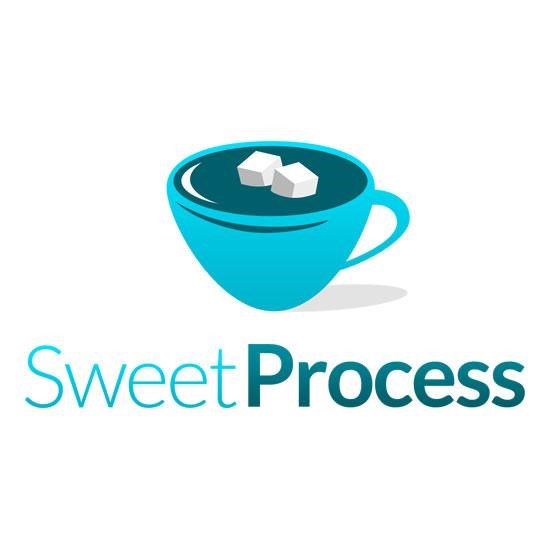
Proper documentation of business processes is an essential part of compliance. Recordkeeping, service of process, and annual report filings are part of every corporate organization’s primary regulatory compliance requirements. Creating and documenting clear procedures makes policies accessible to employees and regulatory bodies and improves overall business operation.
Therefore, companies must document how they expect policies to be followed or risk partial or complete non-compliance. An essential tool such as SweetProcess can help you streamline your operations by documenting your entire business process and standard operating procedures with ease to help you stay compliant.
Not only this, SweetProcess also helps you master and implement policies. It enables you to create, share and ensure the correct adoption of your business’s policies. Without a doubt, having the right policies is essential in maintaining industry standards and can help protect your business.
Many organizations that use SweetProcess have testified to its brilliance at streamlining and organizing their procedures and policies. For example, when Liston Newton Advisory was experiencing organizational chaos and didn’t know how to tame it, finding SweetProcess was a huge relief.
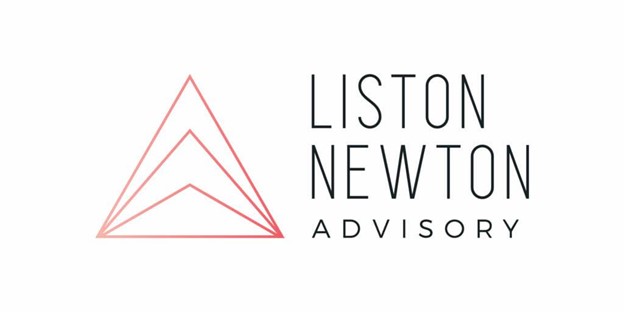
Many of their staff weren’t necessarily following the procedures the way they were designed, leading to different people in different offices doing the same things in different ways. According to the company’s director/advisor, John Liston, SweetProcess assisted in setting up the company’s internal policies for annual leave, dress code, reimbursement for additional study, and so on. In his words, these policies were repeatedly explained when a team member was on-boarded and never again. Now they use SweetProcess to store procedures that employees can call up at any time.
Liston says they had squandered tens of thousands of dollars in an attempt to solve this problem. In a typical workday, his team members would often be reduced to wandering around the office to ask how to do a specific task or even find a procedure. But with SweetProcess, all that chaos became a thing of the past.
Most people would say that SweetProcess has helped them improve their policies, but in the true sense, it has made their company more compliant.
Similar to Liston Newton Advisory’s situation, ParcelPoint also had difficulty streamlining its business procedures. With over 1,400 employees across Australia, the company struggled to implement its policies across the board. The process was becoming too disorganized and chaotic for Charlotte Wallwork, the operations manager at ParcelPoint. She spent half of the day explaining things and answering the same questions for the umpteenth time.
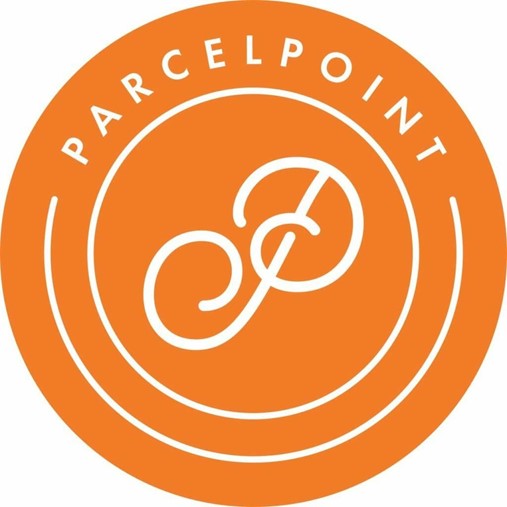
When it was too much to bear, Charlotte actively searched for a helpful system to streamline departmental operations. Then she came across SweetProcess and quickly signed up for the free trial.
“Because we did the free trial, I was able to already set up quite a lot of stuff, and they could see how it was actually going to work. It wasn’t just in theory—they could actually see how we were already using it. I think that helped with getting the buy-in for the signup,” says Charlotte.
Their company is snowballing in size, and their staff strength has increased considerably. But the good thing is that they don’t have to worry about knowledge getting lost because SweetProcess assists in capturing all of the necessary information. Obviously, signing up with SweetProcess has helped them create a winning culture.
Proper documentation is crucial for smooth business operations. However, there has to be a balance of knowledge among employees to achieve this. The president of Americanflat, Giorgio Piccoli, began to notice the existence of knowledge imbalance within his organization as his team began to expand. To fix what he called “tribal knowledge,” they needed a level-playing field for all their workers through a decentralized knowledge base.
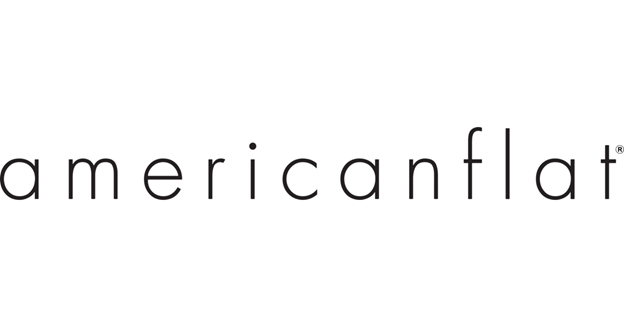
When they started using SweetProcess, the problem of transferring knowledge from one person to another was solved. They had found an easy way to document every procedure in SweetProcess and made it accessible to all team members. As a result, everyone now has access to all the information they need at any given time. That immensely helped bridge the information gap while also increasing their overall productivity.
Also, having the company’s policies and procedures handy helped the company stay compliant, all with the help of SweetProcess.
Wondering how SweetProcess can help you achieve effective compliance? Sign up for a 14-day free trial to start enjoying the benefits of streamlining your business operations. You do not need a credit card to sign up, and you can easily walk away if you are dissatisfied at the end of your free trial period.

Congratulations on coming this far!
You just completed a crash course on regulatory compliance.
In this comprehensive guide, you’ve learned that complying with regulations, codes, and extant laws is crucial for successful business operations. You also discovered how adhering to regulations can protect your business, employees and, most importantly, customers from impending danger, and how companies tend to minimize risks that could jeopardize their operations.
But what does the future hold for regulatory compliance?
The world is yet to see the best when it comes to ensuring compliance across all industries. Even though regulatory agencies have in place functional systems and tools to ensure that the provisions of these regulations are met, a lot can still be done.
With tools and software technologies dominating the compliance scene, it’s safe to say that the future will tilt toward digitization. As a result, existing compliance tools will become more refined, and the adoption will improve from where it currently stands. For example, Regtech (regulatory technology) is already revolutionizing the Financial- Technology (FinTech) space, thus opening people’s eyes to the kind of success they can have when they embrace compliance technology in their respective industries.
Furthermore, every establishment also needs internal tools to refine its compliance processes. That’s where tools like SweetProcess and other compliance management software come in. With SweetProcess, for example, you can prepare detailed and well-structured compliance policies and systemize your operations.
Check out how much progress you can make with SweetProcess by signing up for a 14-day free trial. You can also download a free worksheet that guides you through creating and implementing an effective compliance policy for your company.
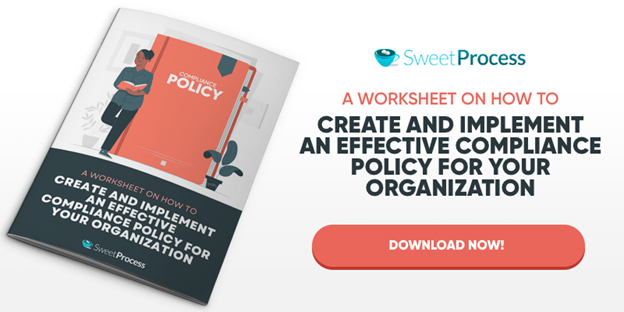
I am a research psychologist and regulatory scientist who has done a good deal of research in the regulatory science field as it relates to human services (please see my research institute website which I listed below). I presently have a licensing measurement course I offer for the National Association for Regulatory Administration. I would be very interested in seeing how we could potentially collaborate.